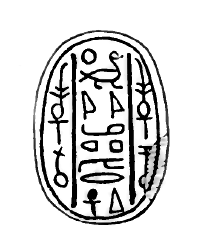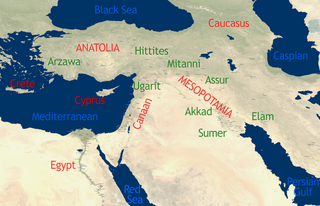Related Research Articles

The Bronze Age was a historical period lasting from approximately 3300 to 1200 BC. It was characterized by the use of bronze, the use of writing in some areas, and other features of early urban civilization. The Bronze Age is the middle principal period of the three-age system, between the Stone and Iron Ages. Worldwide, the Bronze Age generally followed the Neolithic period, with the Chalcolithic serving as a transition.
The 10th century BC comprises the years from 1000 BC to 901 BC. This period followed the Late Bronze Age collapse in the Near East, and the century saw the Early Iron Age take hold there. The Greek Dark Ages which had come about in 1200 BC continued. The Neo-Assyrian Empire is established towards the end of the 10th century BC. In the Iron Age in India, the Vedic period is ongoing. In China, the Zhou dynasty is in power. Bronze Age Europe continued with Urnfield culture. Japan was inhabited by an evolving hunter-gatherer society during the Jōmon period.

The 17th century BC was the century that lasted from 1700 BC to 1601 BC.
The 1670s BC was a decade lasting from January 1, 1679 BC to December 31, 1670 BC.
The 1550s BC was a decade lasting from January 1, 1559 BC to December 31, 1550 BC.
The 29th century BC was a century that lasted from the year 2900 BC to 2801 BC.
The history of ancient Egypt spans the period from the early prehistoric settlements of the northern Nile valley to the Roman conquest of Egypt in 30 BC. The pharaonic period, the period in which Egypt was ruled by a pharaoh, is dated from the 32nd century BC, when Upper and Lower Egypt were unified, until the country fell under Macedonian rule in 332 BC.

The Second Intermediate Period dates from 1700 to 1550 BC. It marks a period when ancient Egypt was divided into smaller dynasties for a second time, between the end of the Middle Kingdom and the start of the New Kingdom. The concept of a Second Intermediate Period generally includes the 13th through to the 17th dynasties, however there is no universal agreement in Egyptology about how to define the period.

Meruserre Yaqub-Har was a pharaoh of Egypt during the 17th or 16th century BCE. As he reigned during Egypt's fragmented Second Intermediate Period, it is difficult to date his reign precisely, and even the dynasty to which he belonged is uncertain.

The four sons of Horus were a group of four deities in ancient Egyptian religion who were believed to protect deceased people in the afterlife. Beginning in the First Intermediate Period of Egyptian history, Imsety, Hapy, Duamutef, and Qebehsenuef were especially connected with the four canopic jars that housed the internal organs that were removed from the body of the deceased during the process of mummification. Most commonly, Imsety protected the liver, Hapy the lungs, Duamutef the stomach, and Qebehsenuef the intestines, but this pattern often varied. The canopic jars were given lids that represented the heads of the sons of Horus. Although they were originally portrayed as humans, in the latter part of the New Kingdom, they took on their most distinctive iconography, in which Imsety is portrayed as a human, Hapy as a baboon, Duamutef as a jackal, and Qebehsenuef as a falcon. The four sons were also linked with stars in the sky, with regions of Egypt, and with the cardinal directions.

The Fourteenth Dynasty of Egypt was a series of rulers reigning during the Second Intermediate Period over the Nile Delta region of Egypt. It lasted between 75 and 155 years, depending on the scholar. The capital of the dynasty was probably Avaris. The 14th Dynasty existed concurrently with the 13th Dynasty based in Memphis. Some of the contested rulers of the 14th Dynasty are commonly identified by Egyptologists as being of Canaanite (Semitic) descent, owing to the distinct origins of the names of some of their kings and princes, like Ipqu, Yakbim, Qareh, or Yaqub-Har. Names in relation with Nubia are also recorded in two cases, king Nehesy and queen Tati. However, the dynasty rulers are not referred to as Hyksos in the Turin kings list.

Khasekhemre Neferhotep I was an Egyptian pharaoh of the mid Thirteenth Dynasty ruling in the second half of the 18th century BC during a time referred to as the late Middle Kingdom or early Second Intermediate Period, depending on the scholar. One of the best attested rulers of the 13th Dynasty, Neferhotep I reigned for 11 years.

The majority of Egyptologists agree on the outline and many details of the chronology of Ancient Egypt. This scholarly consensus is known as the Conventional Egyptian chronology, which places the beginning of the Old Kingdom in the 27th century BC, the beginning of the Middle Kingdom in the 21st century BC and the beginning of the New Kingdom in the mid-16th century BC.

Maaibre Sheshi was a ruler of areas of Egypt during the Second Intermediate Period. The dynasty, chronological position, duration and extent of his reign are uncertain and subject to ongoing debate. The difficulty of identification is mirrored by problems in determining events from the end of the Middle Kingdom to the arrival of the Hyksos in Egypt. Nonetheless, Sheshi is, in terms of the number of artifacts attributed to him, the best-attested king of the period spanning the end of the Middle Kingdom and the Second Intermediate period; roughly from c. 1800 BC until 1550 BC. Hundreds of scaraboid seals bearing his name have been found throughout the Levant, Egypt, Nubia, and as far away as Carthage, where some were still in use 1,500 years after his death.

The following outline is provided as an overview of a topical guide to ancient Egypt:

Seankhibre Ameny Antef Amenemhat VI was an Egyptian pharaoh of the early Thirteenth Dynasty.

The chronology of the ancient Near East is a framework of dates for various events, rulers and dynasties. Historical inscriptions and texts customarily record events in terms of a succession of officials or rulers: "in the year X of king Y". Comparing many records pieces together a relative chronology relating dates in cities over a wide area.

Nehesy Aasehre (Nehesi) was a ruler of Lower Egypt during the fragmented Second Intermediate Period. He is placed by most scholars into the early 14th Dynasty, as either the second or the sixth pharaoh of this dynasty. As such he is considered to have reigned for a short time c. 1705 BC and would have ruled from Avaris over the eastern Nile Delta. Recent evidence makes it possible that a second person with this name, a son of a Hyksos king, lived at a slightly later time during the late 15th Dynasty c. 1580 BC. It is possible that most of the artefacts attributed to the king Nehesy mentioned in the Turin canon, in fact belong to this Hyksos prince.
References
- ↑ Jan Gullberg, C13 Trigonometry, Maths from Birth of Numbers, W. W. Norton in 1997 ( ISBN 039304002X )
- ↑ Popkin, Gabriel (20 May 2022). "Is the world's oldest tree growing in a ravine in Chile?". science.org (newsletter). SCIENCEADVISER. Retrieved 27 August 2024.